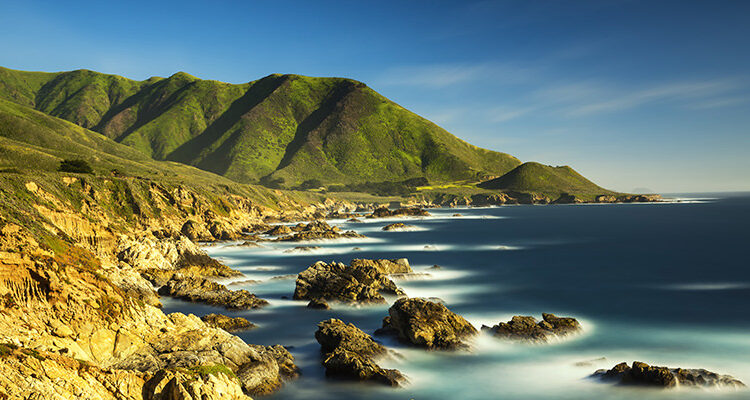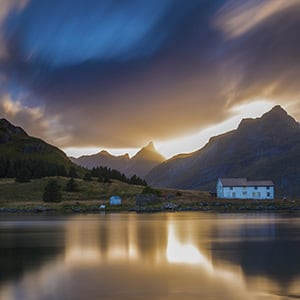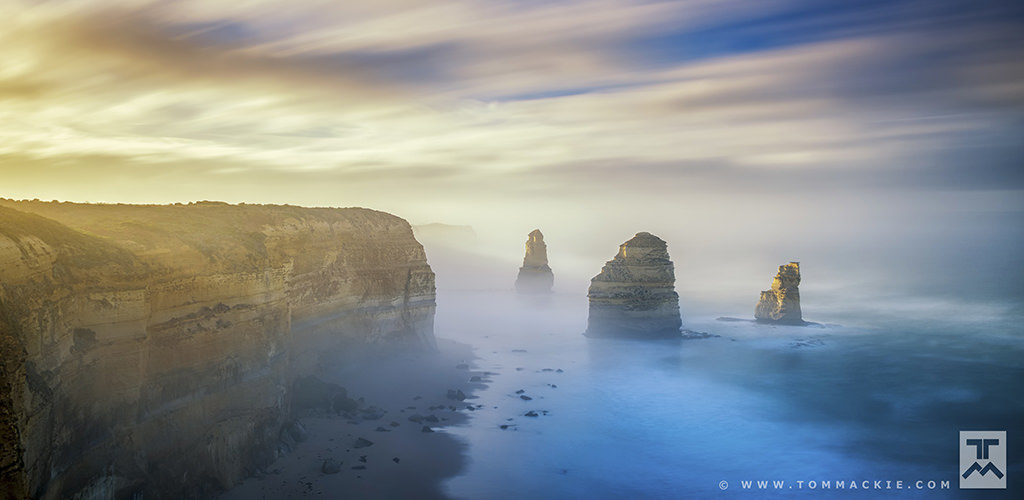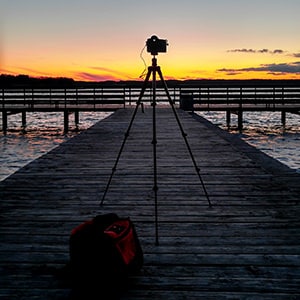
Although summer is the ideal time to get out and about with your camera, it can be the most challenging time of the year for any landscape photographer unsure of how to photograph in bright sunlight.
To achieve this you will need to adapt your thinking and master some different techniques specifically used for shooting in bright conditions.
On a beautiful sunny day you may be faced with an endless blue sky and no clouds at all. Direct and harsh sunlight especially around midday can bleed out the colours and leave images blown out and flat.
The piercing brightness around midday can make it almost impossible to achieve a very slow shutter speed if you are trying to shoot a long exposure, even if you use the lowest ISO and the most minimal aperture.
Learning to how to photograph in harsh light and bright sunlight can help extend your shooting time as a photographer.
In the following video filmed in Aldeburgh Suffolk, we provide a full guide and real world example on how to do this and the details of working with harsh light:
There are several photography tips that you can use to get the most out of the challenging bright conditions of summer:
Metering
 DSLR cameras today have integrated light meters built in so that reflected light is automatically measured to determine the optimal exposure needed.
DSLR cameras today have integrated light meters built in so that reflected light is automatically measured to determine the optimal exposure needed.
The three metering modes are matrix metering, spot metering and centre-weighted metering.
Understanding their use will help you learn how to photograph in bright sunlight.
If you are are at all unsure about these, take a look at our best settings for landscape photography article.
Bright conditions can make correct metering tricky so you may need to change the camera’s metering modes to avoid the wrong exposure.
Normally matrix metering mode is used for most conditions but it can be useful to change the mode to spot metering particularly when the subject is much lighter than the rest of the frame so that the image is exposed correctly.
Centre-weighted metering can be used if you have a subject in the middle of the frame so that it is exposed correctly.
Generally, centre-weighted or spot metering is rarely used for landscape photography as matrix metering will handle most situations.
However, when dealing with bright subjects such as a sandy beach or a snow-covered landscape, it is better to start by increasing the exposure by 1 stop using the exposure compensation button to adjust the exposure back to normal.
Bracketing
To get the most out of difficult conditions sometimes it may be necessary to sort out any problems at the post processing stage and you can do this by bracketing.
This is the process of taking say three shots; one using the recommended settings, one intentionally underexposed and one intentionally overexposed.
Filters to use when mastering how to photograph in bright sunlight
 There are several filters that will allow you to manipulate extremely bright weather to get around the problem of how to photograph in bright sunlight.
There are several filters that will allow you to manipulate extremely bright weather to get around the problem of how to photograph in bright sunlight.
ND filter
The use of a neutral density (ND) filter reduces the amount of light that passes through to the sensor.
The camera will then have to perform a longer exposure than normal to create an evenly exposed image.
This is then useful if you want to create the effect of smoothing water and/or blurring clouds.
ND filters are available in several various styles and densities.
They range from 1 stop which filters out about half of the available light to 15 stops which lets through only 1/32,000ths.
The most common are the variable ND filters and the extreme ND filters such as the Lee Big Stopper (10 stops) or the Lee Super Stopper (15 stops).
The new Super Stopper works very well in bright midday weather conditions.
To see the Lee Big Stopper filter in action and the results it helps to achieve, have a look at our video, Sunrise at the Lighthouse.
Graduated ND filter
A graduated ND filter is similar to an ND filter except that the intensity varies across the surface of the filter.
Polarizer filter
A polarizer is a very useful filter to have for bright conditions as it can give you more control over some colours especially blues.
It is particularly useful to have in the height of summer when the sun is at its highest and arguably its the most challenging season to figure out how to photograph in bright sunlight.
At the middle of the day when the sun’s rays are directly overhead a polarizer filter can really help to emphasise the turquoise blue hues of the sea and produce some vivid colours in your images.
Tripod and remote cable release
 The use of a sturdy tripod is essential when shooting a long exposure as it is crucial to keep the camera completely still.
The use of a sturdy tripod is essential when shooting a long exposure as it is crucial to keep the camera completely still.
A remote cable release is also an essential accessory as you will not need to touch the camera when taking the shot.
This will also be useful to reduce the depth of field in very bright light and reduce the visibility of moving objects.
For example, it’s a good way of making people, cars or anything that is continually moving during the exposure to disappear from your photos.
Lens hood
Some lenses come with a lens hood so this is useful to use to shield the camera from the sun especially when you are shooting directly into the sun to avoid the problem of flare.
If you are keen to find out more about how a professional landscape photographer uses challenging bright sunlight conditions to his advantage, check out this video on The Story Behind the Image – Pride of Madeira Flowers, Carmel, California where we explain this technique in more detail.
How to photograph in bright sunlight – quick checklist:
We hope you have found this article useful and it inspires you to use the techniques we have shared.
As a quick reminder, here the key techniques for you to use as a checklist:
- Use the correct type of metering on your camera
- Consider whether the scene will work best with bracketing
- Use ND filters to help you control the light in your entire scene
- Use a graduated ND filter as needed to balance the light across your scene
- Use a polarizing filter – especially when you have water in your scene
- Always use a sturdy tripod
- Make use of a cable release, self timer or remote trigger
- Fit a lens hood to reduce the risk of glare from sunlight
Good luck experimenting with these techniques and creating some great images!

